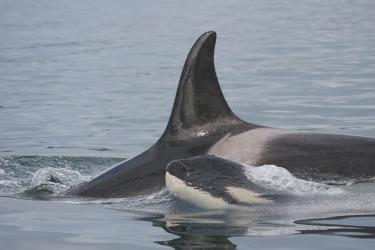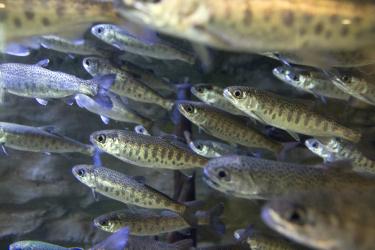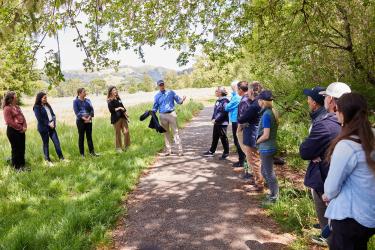In the early 1990s the drift gillnet fishery targeting swordfish off the U.S. West Coast took a high toll on whales, sea turtles and dolphins, with the drifting nets entangling and killing hundreds of these protected species each year. It was clear that management action was needed to reduce entanglements.
In 1996, NOAA Fisheries convened a “take reduction team” under the Marine Mammal Protection Act. The team brought together scientists, fishermen, representatives of environmental organizations, and others to develop strategies that would reduce the entanglements. Those strategies included net modifications and sound-emitting devices.
The recommendations of the Pacific Offshore Cetacean Take Reduction Team (POCTRT) quickly reduced entanglements, as documented by observers aboard fishing vessels in the late 90s. Today, some 25 years later, the drift gillnet fishery that catches swordfish, opah, and some sharks off the West Coast continues to have low impacts on protected species; it entangles very few whales, sea turtles, and dolphins.
“This fishery has made great improvements in the last two decades,” said Barry Thom, Regional Administrator of NOAA Fisheries’ West Coast Region. “If you look at the numbers of whales, turtles, and dolphins affected, they have all declined over the years and remain very low today.”
For instance, the drift gillnet fishery killed or seriously injured almost 20 endangered leatherback turtles per year in some years in the early 1990s. Now leatherback deaths and injuries are rare, with an estimate of just one since 2009. An estimated 50 beaked whales were injured or killed in drift gillnets in some years in the early 1990s, but estimates now show just one seriously injured or killed since 2002.
Humpback whales are among the most common whales off California but estimates show none have been killed or seriously injured in drift gillnets since 2008.
Improvements in the fishery include pingers, which are devices that emit sounds to warn marine mammals away from the gillnets; and net extenders that lower the nets at least 36 feet beneath the surface, leaving room for surface-swimming animals such as dolphins to pass above them. In addition, the agency designated two large conservation areas off the West Coast that are off-limits to drift gillnets when endangered sea turtles are known to frequent the areas.
The improvements have helped the drift gillnet fishery off the West Coast provide a local and sustainable domestic source of seafood with less environmental impact than many alternatives, including swordfish from some foreign fisheries that take a greater toll on marine mammals and sea turtles. After years of adaptive management to reduce the fishery’s impacts, the drift gillnet fishery now has impacts on protected species comparable to other U.S. fisheries, including the U.S. Atlantic swordfish longline fishery, which is certified by the Marine Stewardship Council.
Improvements in the fishery have been recognized by others, including the Monterey Bay Aquarium’s Seafood Watch Program that considers swordfish and most other species caught with drift gillnets on the West Coast a “good alternative” for consumers.
“Although sea turtle interactions used to be an issue in this fishery, management measures put into place in 2001 have greatly reduced these incidental encounters,” Seafood Watch said in a recent update of its ratings for swordfish from the West Coast drift gillnet fishery.
While the improvements have been substantial, fishery managers continue to look for additional ways to harvest swordfish with even less impact. The Pacific Fishery Management Council and NOAA Fisheries have encouraged research into new fishing methods such as deep-set buoy gear, which in early trials has proven to catch swordfish with almost no bycatch of non-marketable fish or impacts on protected species.
NOAA Fisheries is also collaborating with industry and co-managers on the West Coast to reduce impacts of other fisheries on large whales off the West Coast.
“We’re always looking for opportunities to reduce impacts on whales, sea turtles, and other protected species,” said Chris Yates, Assistant Administrator for Protected Species in NOAA Fisheries’ West Coast Region. “Fortunately we have built good partnerships, and we’ve made substantial progress.”
Learn more about North Pacific swordfish harvest and sustainability






